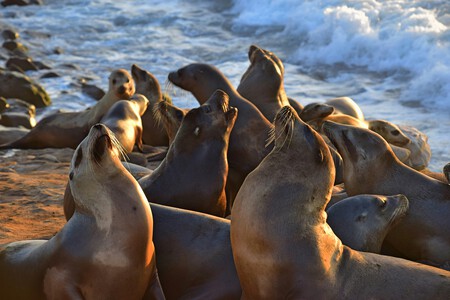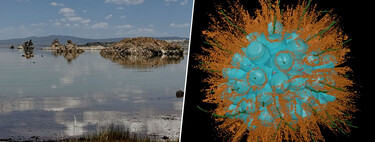
Recently, Southern California’s beaches have become the epicenter of a distressing spectacle. These shores now witness numerous stranded sea lions, exhibiting unusual behaviors like head bobbing or struggling to escape the waves.
These symptoms are indicative of domoic acid toxicosis, a condition that inflicts lasting brain damage on sea lions, potentially leading to their demise.
Total Increase in Sea Lion Interactions in California. The spotlight has turned to sea lions in recent weeks following two attacks in March. In one incident, a 15-year-old girl, aspiring to become a junior lifeguard, was attacked by a sea lion that grabbed her arm, leaving her with multiple bites, bruises, and scratches.
The other case involved RJ LaMendola, a surfer and photographer, who recounted how a sea lion suddenly emerged from the water and charged at him with remarkable speed. The creature bit LaMendola through his wetsuit and continued to chase him as he attempted to return to the shore.
“The fear I felt in that moment is indescribable. So distant from safety, overwhelmed by helplessness, and looking into the eyes of a creature unlike any sea lion I’d ever known—it looked wild, almost sinister, lacking the curiosity or playfulness I associate with these animals,” LaMendola shared on Facebook.


The Ocean’s Toxic Assault. The sea lion that attacked LaMendola wasn’t possessed by any demonic force, but experts suggest its abnormal behavior was likely a result of domoic acid toxicosis, which affects the brain, disrupting their normal actions.
Accounts of poisoned sea lions are growing as they wash ashore on California’s coast, experiencing seizures or seemingly head bobbing. John Warner, CEO of the Marine Mammal Care Center in Los Angeles, described a specific seizure, known as “stargazing,” to CNN, where sea lions will tilt their heads backwards for abnormally prolonged periods, eyes shut.
“They’re completely out of sorts due to the toxin,” Warner explained to the outlet. “They’re terrified and thoroughly disoriented, struggling even to get out of the water to avoid drowning.”
In such a state, he added, sea lions may exhibit “an intense fight or flight response signaled by aggressive or scared behavior.” Thus, if approached by unsuspecting swimmers, unwelcome encounters may occur.
The Hidden Culprit: Algae. The surge in domoic acid poisonings mainly traces back to an algal bloom known as Pseudo-nitzschia. This single-celled diatom anchors the marine food chain, consumed initially by smaller creatures like plankton, which are then preyed upon by fish, and so forth. Crucially, Pseudo-nitzschia can emit domoic acid, a neurotoxin.
As National Geographic notes, Pseudo-nitzschia is perpetually present in the ocean. Problems arise during upwelling, an event where nutrient-rich cold water ascends to the surface along the coast. This phenomenon encourages rapid Pseudo-nitzschia reproduction, leading to algal blooms and, consequently, a spike in domoic acid levels within the food chain, impacting sea lions and other marine life.
Domoic acid toxicosis isn’t exclusive to sea lions; dolphins are also vulnerable. The National Oceanic and Atmospheric Administration (NOAA) reports that over 100 dolphins have already been affected by the current toxic algae outbreak.
What Lies Ahead. While domoic acid toxicosis can prove fatal for some marine animals, hope remains for others. NOAA mentions there is limited intervention possible for dolphins, but sea lions can be treated at rehabilitation centers, where veterinarians work to purge the toxin from their systems.
“The emotional burden is wearing on us,” Warner conveyed in a NOAA article. “Each year, it’s more challenging. Our organizations strive to rescue as many animals as possible, although our resources are insufficient to save every one that needs help.”
Federal authorities advise the public to steer clear of any wildlife that seems affected by domoic acid toxicosis, as these animals can pose a threat.
Images | Samuel Scrimshaw | Joss Woodhead
Related | The Color Blue Is Surprisingly Rare in Animals and Plants. There’s a Good Reason for It


Deja una respuesta